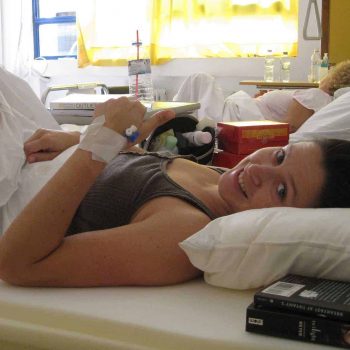

Patient Safety
How Do You Make a Patient Safety Plan For a Home Hospital?
SonderCare Learning Center

SonderCare Learning Center
Avoiding unnecessary hospitalization is a priority for seniors and people with chronic conditions. When in hospitals, these groups are at higher risk of poor outcomes, functional decline, and nursing home placement. Even though it sounds more complex, home hospital or home care is a better option for some patients. Here is how to make a patient safety plan for yourself or your loved one and ensure comfort and security in your home.
Your home is a place where you should feel comfortable and safe. However, for many people, especially older ones, their home environment poses risks for injury and reduced life quality. Whatever the situation or person’s condition, proper healthcare requires a safety plan to help the person feel safe in their own home.
The medical industry is increasing its capacity to care for elderly patients and those with chronic diseases outside of traditional hospital settings. With a patient safety plan, you can turn your home into a secure environment where your family members can eat, sleep, read, watch TV, and move about without worrying about falling and hurting themselves.
A patient safety plan involves strategies that will help you limit accidents, avoid errors, and increase comfort and security. Each plan consists of several key elements that will help you implement and execute safety strategies.
Anyone involved in the care of a patient can help bring about greater safety and procedure surrounding treatment. Part of patient safety planning is collaborating to build a quality safety culture that is open and doesn’t hold anything back during the ups and downs of treatment.
By understanding, cooperation and inquiry, care providers can provide outstanding treatment. Part of this is being proactive, evaluating progress towards goals and being diligent in identifying areas for improvement.
Managing medicine is an essential patient safety concern that you should implement into your plan. Medication errors and drug therapy issues are among the most common issues when caring for your loved one at home.
Come up with a medication management system that will help you organize any medication, supplements, and vitamins you or your loved one should take on schedule.
Home settings introduce challenges for increased infection control. The non-clinical nature of your home, combined with a chronic disease or illness, can increase the patient’s risk of infection.
The best way to avoid unnecessary infections is to ensure your home is as sterile as possible. Create a cleaning schedule that you’ll add to your safety plan and stick to it to create a spotless environment where you or your loved one can relax without worrying about allergens, viruses, or bacteria.
Falls represent a growing safety risk in home settings, which can endanger the patient’s health and lead to higher health care costs. Among senior citizens, falls are a leading cause of injury and fractures. By making your home safer and more accessible for older adults, you will decrease the chance of someone from your family falling and hurting themselves.
One way to prevent harmful falls is to utilize an adjustable Hi-Low bed that will lower to a safe position for entering and exiting from the bed. SonderCare allows you to customize your hospital bed to increase safety and improve comfort in your home through the use of sturdy Assist Rails and Fully-Electric backrest, knee, and chair positioning.
Adequate nutrition for home care patients is essential for keeping your loved ones healthy and happy. Whether due to lack of transportation, inability to shop for groceries, or other factors, poor nutrition may lead to chronic diseases such as gastrointestinal disorders, weak mobility, and decreased cardiac function.
In your safety plan, adding nutrition is crucial to reduce the risk of chronic diseases and improve the patient’s overall health. Find healthy options that are easy to cook and the person enjoys. It may also be worthwhile to consult with a nutritionist regarding caloric intake if the patient’s mobility is limited.
Your home infrastructure is another element in ensuring patient safety at home. Without proper home infrastructure, the patient may struggle to move, walk, or complete everyday activities with ease. Wherever possible, find ways to allow ease of movement around furniture and between rooms and floors. Also, ensure bathroom access is as straightforward as possible.
While some home infrastructure layouts are difficult to tackle, SonderCare makes implementing medical-ready furniture in your home quite simple. With premium hospital beds, mattresses, and chairs designed for home use, SonderCare will add comfort and beauty to any bedroom, without sacrificing safety or quality. Changes like this to home equipment can go a long way to increasing patient safety overall.
It is important because it uses crucial and advanced safety techniques such as monitoring technology, ensures patients understand their treatment plans while checking and verifying all medical procedures. Finally, it promotes following proper sanitization procedures and promotes a team accountability and cooperation environment.
A variety of agents are responsible for ensuring that medical care is provided safely and that no damage occurs (society in general; patients; individual nurses; nursing educators, managers and researchers; physicians; governments and regulatory bodies; professional associations; and accrediting agencies).
Start Your Patient Safety Equipment Collection With SonderCare
Are you recently discharged from hospital, experiencing mobility issues, or in need of palliative or senior care? Enjoy a smoother recovery and get the luxury you deserve by choosing our home hospital products. Contact us today to discuss home hospital beds, mattresses, stand assist chairs and other accessories to make your home hospice perfect for a truly comfortable experience.
Are you looking for the most recent articles on patient safety and medical supplies? Browse our latest resources below and let us know if you have any questions. We’re here to support you as you embark on your road to home medical care.
Seeking The Best Care For Your Loved One?
Browse North America's Luxury
Patient Safety Equipment
Inventory